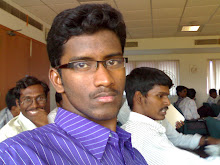Presently our university education system is contributing 3 million graduates and post graduates every year. 7 Million students after their secondary school education in 10th and 12th stop further education and seek employment every year. Thus nearly 10 million youth are injected into the society every year seeking employment.
However, there is a large gap in the availability of employable skill. For example, as per the NASSCOM and Mc. Kinsey Report 2005, it is estimated that the IT, ITES and BPO sector alone will need 9 million direct jobs and 6 million indirect jobs in construction, retail and transportation by 2010, whereas we do not have such a capacity in the country to generate this number which will be acceptable to the three sectors of economy. Similarly, in the case of nursing professional, India is in the process of improving the healthcare services which will need additional 0.5 million nurses and paramedical staff. As per the latest report, worldwide requirements for nurses are estimated to be around 1 million from now to 2012. Presently, in India about 50,000 nurses qualify every year. In the small scale sector, presently 12 million units are employing around twenty eight million people. Many of them are unregistered units. There is a need to bring all the units under the registered category so that all the people can be provided benefits accordingly. At present, the small scale industries contribute to an export of over 20 billion dollars a year, which is expected to increase to over 40 billion dollars within the next five years. This will require addition of nearly 28 million people within 5 years with variety of skills in garments, processed foods, pharmaceutical, electronics, precision engineering and cosmetic products.
How to bridge this gap between availability and requirement in the globalized economy. To bridge the gap, an interface is needed between the education system and the needs of the three sectors of the economy. At present India has five hundred and forty million youth under the age of 25 which will continuously be growing till the year 2050.
During this period, India needs large number of talented youth with higher education for the task of knowledge acquisition, knowledge imparting, knowledge creation and knowledge sharing.
Wednesday, December 31, 2008
Employment and education
Posted by santhoshkumar at 10:16 PM
Subscribe to:
Post Comments (Atom)

0 comments:
Post a Comment